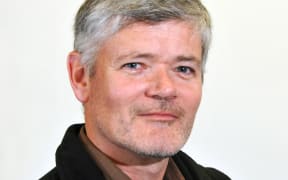Te Riu-a-Māui - or Zealandia - is the world's youngest, smallest, thinnest and most submerged continent.
The world's eighth continent, it sits right underneath us.
“It’s 95 percent submerged and out of sight, it’s five million square kilometres in the southwest Pacific,” says geologist with GNS Science, Dr Nick Mortimer.

Photo: GNS Science
“It’s important to remember that the Polynesians were the first to find the islands of Aotearoa New Zealand and they were the first to engage in exploration and discovery across the entire Pacific Ocean,” Mortimer says.
He says the scientific story of Zealandia began in the 19th century when colonial geologists came to Aotearoa and recognised that they were finding rocks usually only found on continents.
“Both early Māori and the European colonists identified that the two islands of New Zealand were much larger and higher and much more diverse in times of flora, fauna, geology than the Pacific Islands in the Pacific basin that they were used to.”
Geologists don’t restrict their understanding of continents to just the land, Mortimer says.
“We include the submerged continental shelves that form fringes around all the world’s land masses.”
A continent needs to have diverse geology, a thick crust, high elevation, needs to be large and old, Mortimer says.
Te Riu-a-Māui ticks all of those boxes, he says.
It was formally one of the constituent continents of super continent Gondwana, along with Australia, Antartica, South America and Africa.
“Zealandia broke off from Gondwana and became its own continent between 85 and 60 million years ago, which geologically is fairly recent.”
Geologists in New Zealand started to focus on building up the data sets for the underwater continent in the early 2000s.

Nick Mortimer GNS Photo: supplied/GNS
In 2014, Mortimer and Hamish Campbell published Zealandia: Our Continent Revealed.
Evolutionary biologists are very interested in Zealandia for context, he says.
“It provides a lovely template on which they can explore these hypotheses of how the New Zealand flora and fauna were developed, whether it’s by vicarious, where you have Gondwana relics, or there’ve been repeated colonisation of flora and fauna with time.”
From a social sciences and cultural studies lens, Zealandia may perhaps give us another way to look at ourselves, he says.
Geology isn’t always recognised as a leading science among physics, chemistry, biology and mathematics, he says.
“A geological career is a chance to do something practical and positive for society, in terms of hazards, climate and resources that the planet needs.
“The solid Earth is a part of our environment; it is as much a part of our nature as our plants and animals and forests and the like.”
Marine geological expeditions have been some of the most inspiring research Mortimer says he’s done.
In late 2002, he was invited on German ship, to research basalts – rocks that are distinctly oceanic crust of the Earth rather than the continental crust.
“We were mainly sampling seabed rocks via rock dredging in a basket east of the North Island.
After weeks of dredging basalts, 600km east of the Chatham Islands they one day dredged granite.
“This is a real eureka moment in the story of Zealandia because granites are distinctive rocks of the Earth’s continent, not of the Earth’s oceans.”
The rock was pulled apart, dated and analysed.
This finding was also important for New Zealand’s application for the UN to extend the country’s submarine territory, he says.
Mortimer has recently been awarded a $100,000 James Cook Research Fellowship from Royal Society Te Apārangi to continue his work on Zealandia's geological make-up and ancestry.
As part of this, he’s keen to tell a mātauranga Māori story of Aotearoa New Zealand Zealandia exploration and discovery alongside the scientific story.
“I’ll be seeking partners, co-authors to write hopefully a non-specialist book on this topic.”

